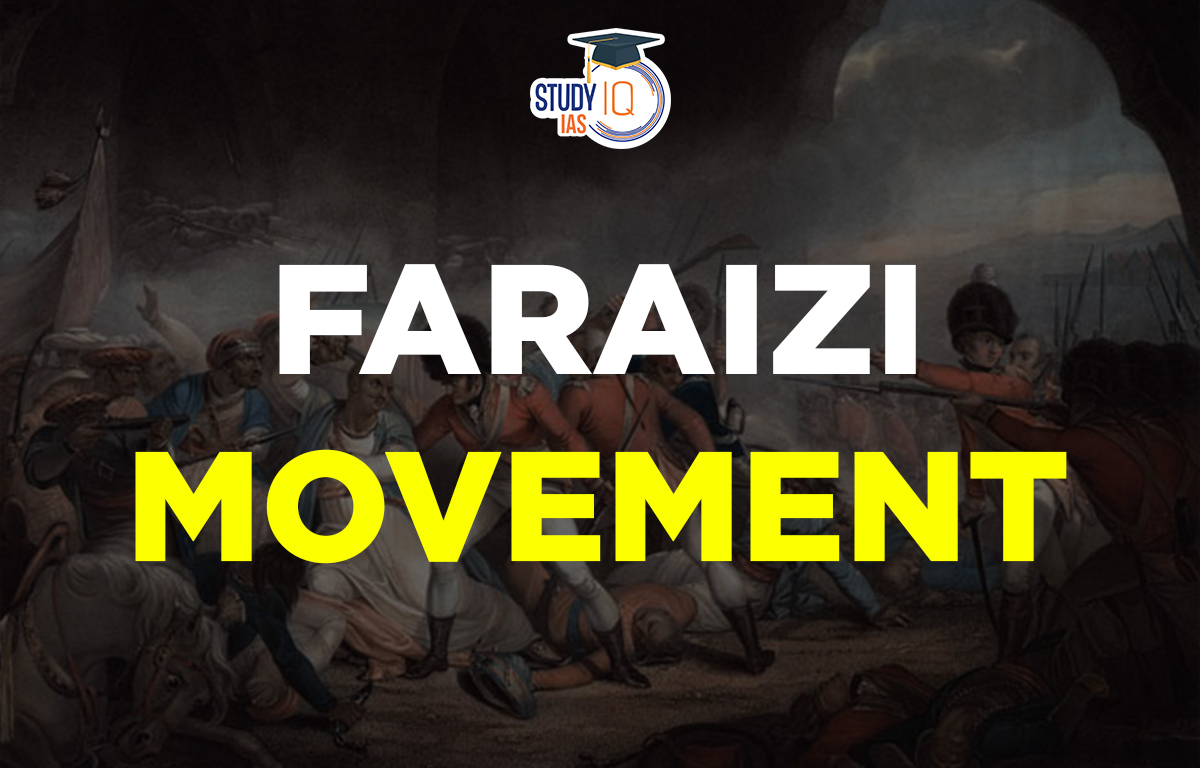Table of Contents
Faraizi Movement
The Faraizi Movement was a socio-religious reform initiative aimed at reviving Islamic practices among Muslims in Eastern Bengal. It emphasized adherence to Islamic obligations (Farz) and eradicated un-Islamic practices. Founded in 1818 by Haji Shariatullah, the movement became a symbol of resistance against British oppression and exploitation by landlords. It also advocated for the protection of tenant rights and significant social, spiritual, and political reforms.
Read More: Akali Movement
Faraizi Movement History
In the 19th century, East Bengal witnessed a resurgence of religious activism as peasants embraced the call for reform. The Faraizi Movement aimed to:
- Revitalize Islam: Protect it from British atrocities and Hindu influences.
- Address Peasant Issues: Unite marginalized farmers against the oppressive zamindari system.
Under British rule, many Bengali Muslims faced social and economic marginalization. Haji Shariatullah sought to revive Islamic principles and resist colonial injustices. The movement became widely popular among peasants, particularly in Faridpur and Dhaka.
Read More: Singh Sabha Movement
Faraizi Movement Founder
Haji Shariatullah established the movement in 1818. The term “Faraizi” derives from the Urdu word Farz, meaning duties prescribed by Allah. Shariatullah focused on eliminating un-Islamic practices and restoring the purity of Islam.
After his death, his son Muhsinuddin Ahmad Dudu Miyan took over, shifting the focus toward agrarian reforms. Dudu Miyan became a charismatic leader, uniting farmers to resist excessive taxes and oppressive indigo cultivation. The administrative center of the movement was established in Bahadurpur.
Read More: Reform Movements by Parsi
Faraizi Movement Beginning
The Faraizi Movement began in Bengal around 1818, led by Haji Shariatullah. It aimed to revive Islamic practices, abolish un-Islamic customs, and resist socio-economic exploitation by Hindu landlords and British indigo planters. Named after the term “Fard”, meaning religious obligations, it encouraged strict adherence to Islamic duties like prayer and fasting while uniting Muslim peasants against oppressive taxation. Centered in regions like Faridpur and Dhaka, the movement became both a religious reform initiative and a socio-political protest against colonial injustices.
Read More: Temple Entry Movement
Faraizi Movement Objectives
The Faraizi Movement aimed to:
- Reinforce Islamic Principles: Promote adherence to Farz and eliminate practices contrary to Islam.
- Uplift Peasants: Organize farmers to resist exploitation by zamindars and indigo planters.
- Counter British Policies: Challenge the socio-economic impact of British rule on Muslims.
- Empower Marginalized Communities: Create an alternate governance system rooted in justice and unity.
Read More: Self-Respect Movement
Faraizi Movement Significance
The movement played a pivotal role in:
- Tenant Rights: Protecting peasants from exploitation.
- Religious Revival: Promoting Islamic values amidst colonial oppression.
- Social Equality: Encouraging unity among the oppressed, irrespective of caste or creed.
However, internal disagreements, lack of organizational structure, and leadership challenges eventually led to its decline. After Dudu Miyan’s death in 1862, the movement lost momentum and was relegated to history as a minor agrarian uprising.
Read More: Reform Movements in Southern India
Legacy of the Faraizi Movement
Despite its decline, the Faraizi Movement left a lasting impact by:
- Strengthening the voice of marginalized communities.
- Influencing subsequent reformist movements.
- Highlighting the potential of grassroots mobilization against injustice.
Faraizi Movement UPSC
Faraizi Uprising (1838–57) backed the peasant cause against the zamindars and called for radical changes in religion, society, and politics. Renters’ rights were largely protected by the movement, which also had the goal of ousting the British. The tenants’ fight against the zamindars was also supported by the Faraizi sect. The Faraizi riots took place between 1838 and 1857. The Wahhabi movement was embraced by the majority of Faraizis. Details regarding the Faraizi Movement for UPSC Exam Preparation are provided in this article.
Read about: Civil Disobedience Movement


 Nagari Pracharini Sabha Revival: Backgro...
Nagari Pracharini Sabha Revival: Backgro...
 Ryotwari System in India, Features, Impa...
Ryotwari System in India, Features, Impa...
 Battle of Plassey, History, Causes, Impa...
Battle of Plassey, History, Causes, Impa...





















